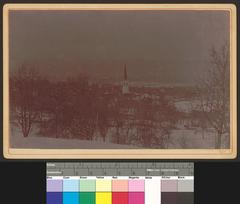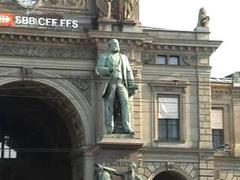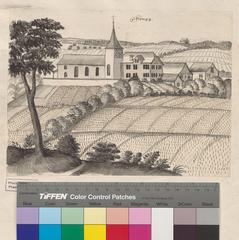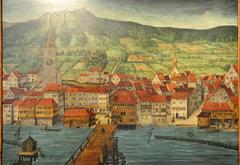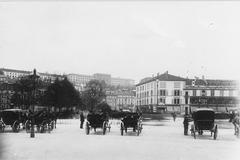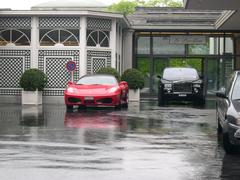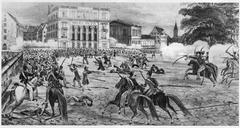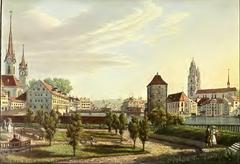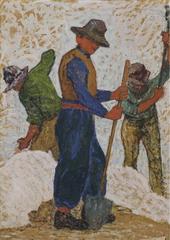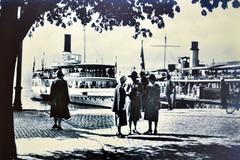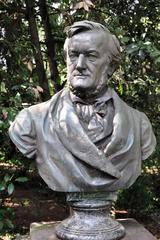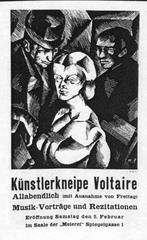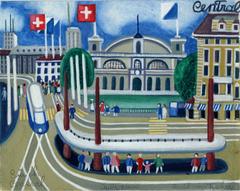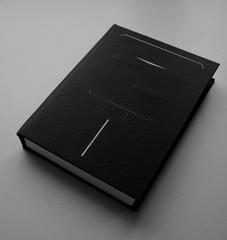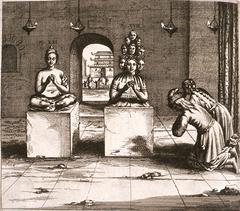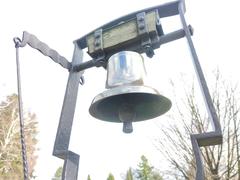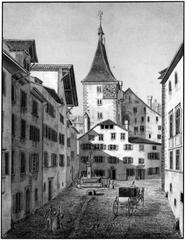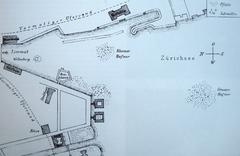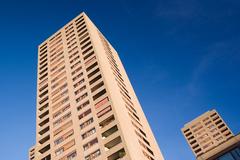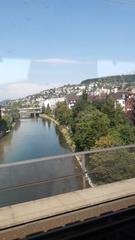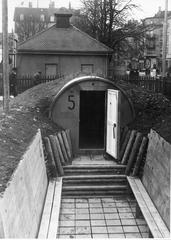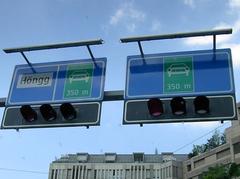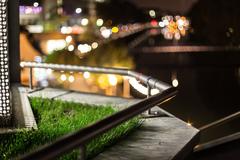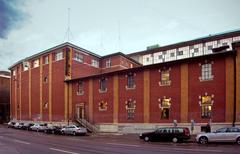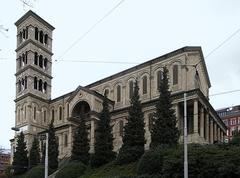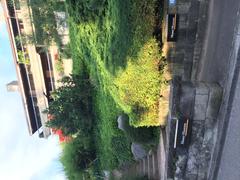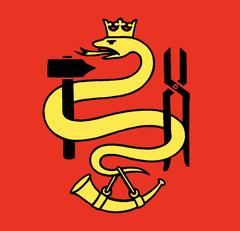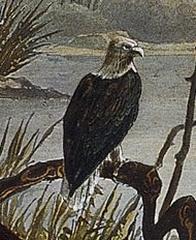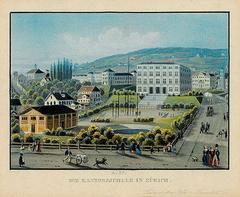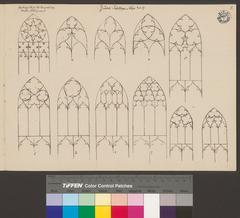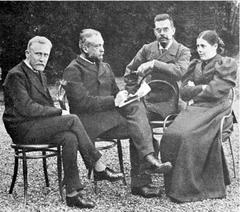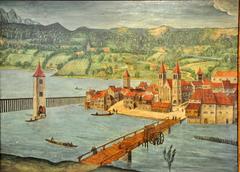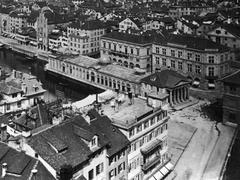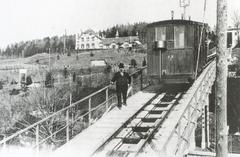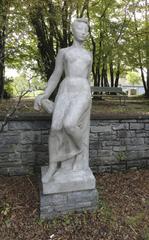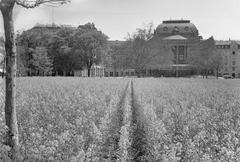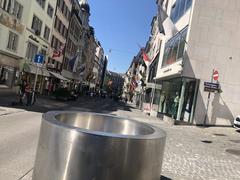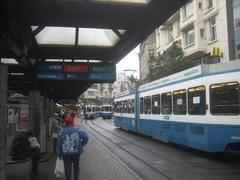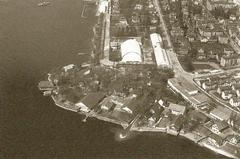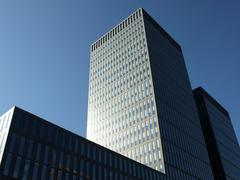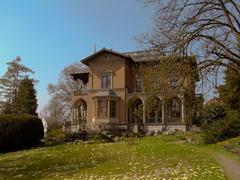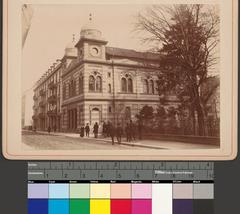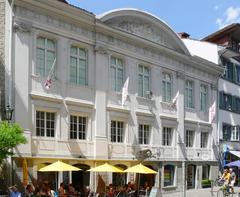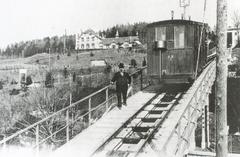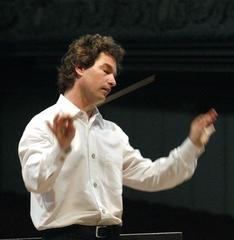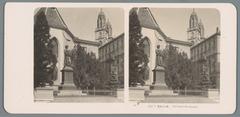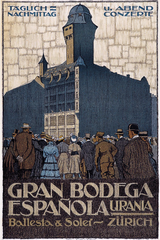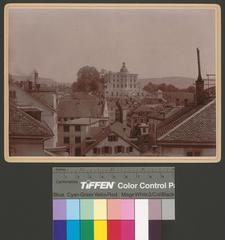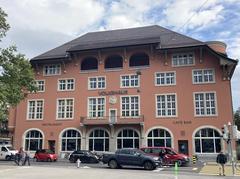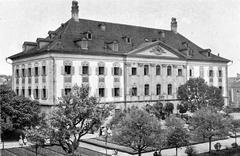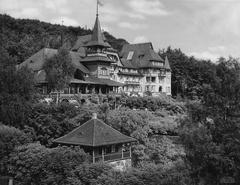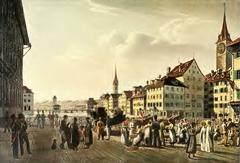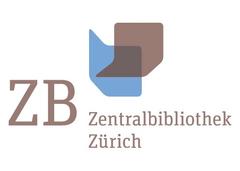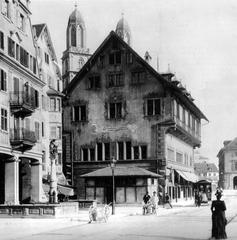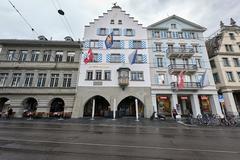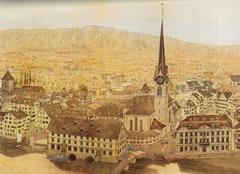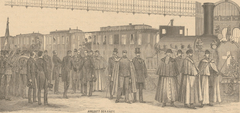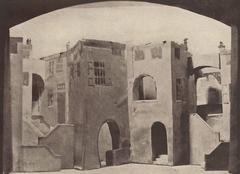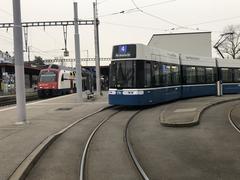Zürich Enge Alpenquai: Visiting Hours, Tickets, and Travel Guide
Date: 15/06/2025
Introduction
Zürich–Enge Alpenquai is an extraordinary destination where prehistoric heritage, stunning architecture, and vibrant urban life converge along the tranquil shores of Lake Zürich. As part of the UNESCO World Heritage Site “Prehistoric Pile Dwellings around the Alps,” this area offers unique insight into early human settlement and showcases Zürich’s continuous evolution—from Neolithic lake dwellers to a modern cosmopolitan city.
The Enge district’s lakeside promenades, lush parks like the Arboretum, and amenities such as Seebad Enge create a dynamic space for history buffs, nature lovers, and urban explorers alike. Exceptional public transport connections—including trams, boats, and the Zürich Enge railway station—make this area accessible to all, complemented by thoughtful infrastructure for visitors with limited mobility.
This comprehensive guide covers everything you need to plan an enriching visit: historical background, practical travel tips, ticketing, accessibility, guided tours, nearby attractions, and more. Discover why Zürich–Enge Alpenquai is one of Switzerland’s most treasured cultural landscapes (UNESCO World Heritage, Wikipedia: Enge, MySwitzerland: Seebad Enge, Zürich Tourism).
Historical Overview
Prehistoric Beginnings: The UNESCO Pile Dwellings
The roots of Zürich–Enge Alpenquai stretch back over 7,000 years. Archaeological findings reveal Neolithic and Bronze Age pile dwellings—wooden houses built on stilts above marshy ground and water. These ancient settlements, now submerged beneath Lake Zürich, are part of the UNESCO-listed “Prehistoric Pile Dwellings around the Alps.” Exceptional preservation of materials like wood, textiles, and plant remains offers profound insight into early Alpine life and human adaptation to lake environments (Everything Explained: Pile Dwellings).
Enge Through the Ages
Originally a rural village, Enge became part of Zürich in 1423 and remained agricultural until the late 19th century. The baroque Muraltengut estate (1777) stands as a reminder of this era.
The late 19th-century transformation, led by city engineer Arnold Bürkli, shaped the modern lakeshore. Projects such as the creation of Bürkliplatz, the Arboretum, and the continuous lakeside promenade (Quaianlagen) defined Zürich’s relationship with its lake and integrated Enge into the expanding city.
Architectural and Cultural Landmarks
Weisses Schloss: Built between 1890 and 1893, this neobaroque “White Castle” is an icon of the area, featuring a striking limestone façade atop foundations driven deep into the former lakebed.
Tonhalle: The opening of the Neue Tonhalle concert hall in 1895 established Enge as a cultural hub. Though replaced by the Kongresshaus in 1939, the tradition of lakeside arts and music continues.
Seebad Enge: A floating bath complex exemplifying Zürich’s approach to urban leisure, Seebad Enge offers swimming, sauna, and wellness experiences with direct lake access (MySwitzerland: Seebad Enge).
Heritage and Conservation
Alpenquai’s prehistoric site is listed as a Swiss cultural property of national significance. Ongoing preservation, educational displays, and city-led restoration projects ensure that the area’s heritage remains accessible and celebrated.
Visiting Zürich–Enge Alpenquai: Practical Information
Getting There
- By Tram/Bus: Tram lines 4, 5, 8, and 11, as well as several bus routes, stop at Bürkliplatz and Enge, both steps from the lakeside.
- By Train: Zürich Enge railway station, served by S-Bahn lines S2, S8, S21, and S24, is a short walk away (Wikipedia: Enge).
- By Boat: Regular ferries from Zürich Landesmuseum to Bürkliplatz provide scenic access (Rome2Rio).
- By Foot/Cycle: The area is easily reached by a 15–25 minute walk or a short bike ride from Zürich Hauptbahnhof (main station), following well-marked, lakefront promenades.
Visiting Hours and Tickets
- Outdoor Sites (Pile Dwellings, Promenades, Arboretum): Open year-round, accessible 24/7, and free of charge.
- Seebad Enge: Open daily (hours vary by season), with entry fees ranging from CHF 10–20. Sauna and wellness services available (MySwitzerland: Seebad Enge).
- Museums (e.g., Swiss National Museum, Museum Rietberg): Typically open Tuesday–Sunday, 10:00–17:00. Admission CHF 10–14; check museum websites for current information.
Accessibility
- Wheelchair Access: Promenades, parks, and public transport are accessible and equipped with ramps and elevators.
- Assistance: The SBB offers travel assistance for visitors with disabilities when booked in advance.
Best Time to Visit
- Spring–Autumn: Enjoy mild weather, blooming parks, and lakeside activities.
- Summer: Ideal for swimming and open-air events.
- Winter: Quieter atmosphere, occasional frozen lake views, and popular sauna experiences.
Things to Do and See
Heritage and Nature
- Archaeological Displays: Interpretive panels and digital resources along the lakeshore explain the UNESCO pile dwellings’ significance.
- Arboretum: A botanical park with rare trees, landscaped gardens, and the historic Voliere Zürich aviary.
- Photographic Spots: Capture panoramic lake and Alpine views, historic architecture, and vibrant park scenes.
Recreation
- Swimming: Seebad Enge and nearby Strandbad Mythenquai offer excellent facilities.
- Walking & Cycling: The Quaianlagen promenade stretches for kilometers, ideal for strolls and bike rides.
- Boat Cruises: Depart from Bürkliplatz for sightseeing or thematic excursions.
Culture and Events
- Guided Tours: Book archaeological or historical tours through Zürich Tourism, especially during summer and holiday seasons.
- Festivals & Concerts: The area hosts open-air events, music festivals, and seasonal markets.
Nearby Attractions
- Museum Rietberg: Renowned for non-European art collections.
- Enge Church: Notable for its architecture and city views.
- Belvoirpark: Historic landscaped gardens and hospitality school.
- Bahnhofstrasse & Old Town: Premier shopping and historic exploration just minutes away.
Transportation Guide
Public Transport
- Trams/Buses: Frequent, reliable, and integrated ticketing (CHF 2–3 per ride). The Zürich Card offers unlimited travel and discounts.
- Trains: Zürich Enge station connects to regional and national lines.
- Ferries: Operated by ZSG, hourly departures, scenic routes across Lake Zürich.
- Night Services: Night buses and trams run on weekends for late-night travel (Rome2Rio).
Taxis and Rideshares
- Taxis: Readily available; fare from Zürich HB to Alpenquai is CHF 16–20.
- Uber: Operates throughout Zürich, offering competitive rates.
Walking & Cycling
- Walking: Pedestrian-friendly city with scenic routes.
- Cycling: Bike-sharing stations (Züri rollt) and dedicated lanes throughout the city.
Accessibility
- Low-Floor Vehicles: Trams, buses, and ferries are accessible.
- Station Facilities: Elevators and tactile guidance systems at major stations.
Practical Tips
- Weather: June–August is warmest (average highs 22°C/72°F). Rain is possible; bring a jacket.
- Bags: Storage available at Zürich HB and Zürich Enge.
- Language: German is primary; English widely spoken.
- Safety: Zürich is very safe, even at night.
- Sustainability: Use public transport, recycle, and respect local customs.
- Peak Hours: Avoid weekday commuter peaks for a more relaxed experience.
Frequently Asked Questions (FAQ)
Q: Is there an entrance fee for Zürich–Enge Alpenquai?
A: No. The lakeside promenade and heritage sites are free. Seebad Enge and museums have separate admission fees.
Q: Are guided tours available?
A: Yes. Book through Zürich Tourism or local museums for expert-led experiences.
Q: Is the area family-friendly?
A: Absolutely. Parks, playgrounds, and swimming facilities are ideal for all ages.
Q: Are pets allowed?
A: Dogs are welcome in most outdoor areas (leash required). Check specific facility rules.
Q: How accessible is the area?
A: The site is fully accessible, with paved paths and adapted public transport.
Conclusion
Zürich–Enge Alpenquai is where ancient history meets modern Swiss life, offering an immersive experience along Lake Zürich’s idyllic shoreline. Explore UNESCO-listed pile dwellings, elegant architecture, lush gardens, and cultural events—all seamlessly connected by world-class public transport and accessible infrastructure. Whether you seek education, recreation, or relaxation, this lakeside destination is a highlight of any Zürich visit.
Ready to explore Zürich–Enge Alpenquai?
Download the Audiala app for audio tours, use the Zürich Card for easy travel and discounts, and consult official tourism sites for up-to-date information.
Sources
- UNESCO World Heritage
- Wikipedia: Enge
- MySwitzerland: Seebad Enge
- Zürich Tourism
- Everything Explained: Pile Dwellings
- Rome2Rio
- European Rail Guide
- GPSmyCity
- dbpedia
- kids.kiddle.co
- thecrazytourist.com
- shewandersabroad.com
- swissfamilyfun.com
- maddysavenue.com
- globalhighlights.com
- World Cities Culture Forum
